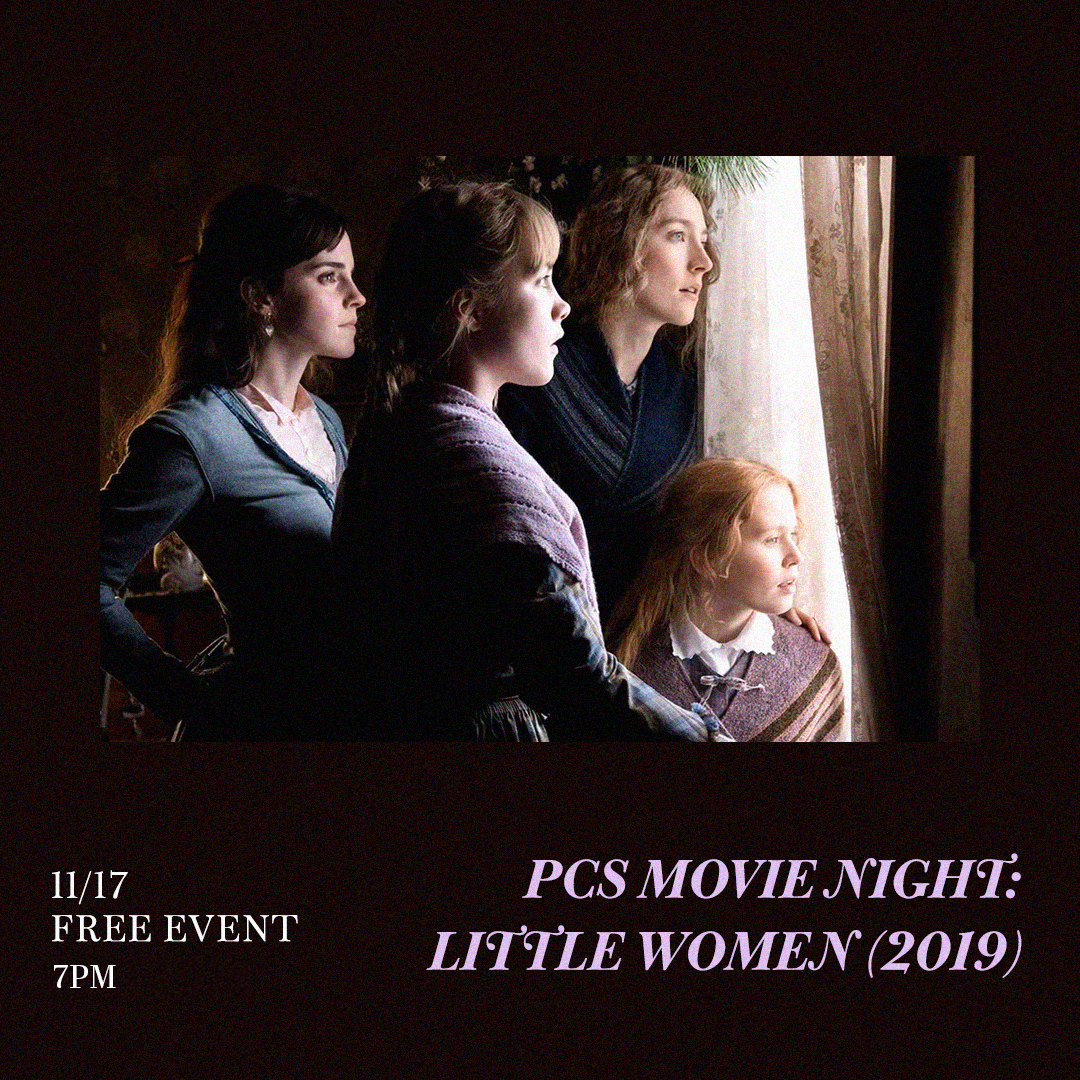The World of the Play: Native Gardens
Meet the Playwright
Karen Zacarías was recently hailed by American Theatre Magazine as one of the most produced playwrights in the USA. Her plays include Destiny of Desire, Into the Beautiful North, Just Like Us, Mariela in the Desert, The Sins of Sor Juana, The Book Club Play, Legacy of Light and How the Garcia Girls Lost Their Accent. She also collaborated on the libretto for the ballets Sleepy Hollow and Hemingway: The Sun Also Rises for the Washington Ballet at the Kennedy Center for Performing Arts. Her plays have been produced at The Kennedy Center, The Goodman Theater, South Coast Rep, Cincinnati Playhouse, RoundHouse Theater, GALA Hispanic Theater, Denver Theater Center, Dallas Theater Center and many more. Karen is a core founder of the Latinx Theater Commons, a national network that strives to update the American narrative to include Latinx stories. She is also the founder of Young Playwrights’ Theater, an award-winning theater company that teaches playwriting in public schools in Washington, D.C.
“Writing is a choice. Even when I feel I’m going to burst if I don’t write, it is still a choice. Playwriting is the oddest of choices, because “success” is so ethereal and impossible. But as an extroverted writer, theatre was the one place where I could interact with the world and still write. So although a play may take forever (or never) to be produced, I get to interact and take pleasure in that world. I realize that the more I write, the less I live. But, oddly enough, the more I live, the more I can write. Since childhood, I have seen people become bitter because they have made big sacrifices and given everything to their art; and art (or any profession, no matter how passionate) will never give you everything back. I have tried to be really patient and realistic with our odd profession. I fight the “givingup” demons by putting creative emphasis in a lot of other facets in my life — my family, my students and teaching, my grant writing, my bad cooking. Consequently, I am embarrassingly un-prolific, but, strangely enough, I have had the satisfaction of seeing every one of my plays publicly staged in one way or another.” Interview with Karen Zacarías, American Theatre Magazine, January, 2006.
“The greatest challenge facing me is the idea of not only staying true to your voice, but realizing when your voice starts to change as you grow older and new experiences emerge. I read a play that I wrote 10 years ago and I think, “Who is that?” Others read this play now and sometimes someone will say, “Oh, this is not what I expected from you, and yet I’m really happy that you did it.” I think allowing for this unpredictability and also allowing for the fact that we are not just one story, that there is not just one voice within us, is critical. Writing a play is like raising a child. Each play is really different and they may have different motivations and different aspirations. So, for me, there is the challenge as a writer of not whipping your children and, by avoiding that, allowing them to grow.” Karen Zacarías interviewed by Mark Bly, “Where do we go from here? Four playwrights anticipate the seismic shifts of the new century” American Theatre Magazine, April 2007
The Play's Origins
From American Theatre's article:
'Native Gardens': Building the (Botanical) Wall by Maggie Gilroy
Minutes after hearing Native Gardens read aloud by her cast for the first time, director Melissa Crespo wanted to talk about neighbors. “I’m one of those people who likes to know who I’m living near,” she said to the cast following the table read.
It was Jan. 22, the day after Martin Luther King Jr. Day and 32 days into the nation’s longest-ever government shutdown, which would last 3 more days. Some 800,000 federal employees were without a paycheck for much the same reason Crespo and her cast sat around a table in Syracuse, N.Y.: a border dispute between neighbors.
“Walls are very much in our lives right now—they’re constantly being talked about,” Crespo said after the reading in the Syracuse Stage rehearsal room while Lulu, her rescued Basset Hound mix, sat on her lap. The Brooklyn-based director is at the helm of a three-way co-production of Native Gardens, which first ran at Syracuse Stage Feb. 13-March 3, would move on to the Geva Theatre Center in Rochester, New York March 26-April 21, and will wrap its run on Portland Center Stage’s U.S. Bank Main Stage May 18-June 16.
Along with Crespo, the four lead actors—Anne-Marie Cusson, Paul DeBoy, Erick González, and Monica Rae Summers Gonzalez—are traveling with the production to all three locations. The silent Latinx gardener roles are cast locally in each city (in Syracuse they were played by Baker Adames, Luis A. Figuerosa Rosado, Aaron J. Mavins, Isabel Rodriguez, and Devante Vanderpool).
Penned by one of the 10 female writers on that list, it helped earn Zacarías the fifth spot on another of AT’s lists, the Top 20 Most-Produced Playwrights of 2018-19. Both lists were the most diverse they’ve ever been, with Zacarías one of 6 playwrights of color and 11 women on the playwrights’ list...
Frank and Virginia Butley are an elderly white couple whose son has aged and moved out of the house they’ve lived in for decades. Frank spends most of his free time perfecting his manicured garden, a pastime he hopes will relieve his chronic stress and win him an award from the Potomac Horticultural Society.
New next door are Tania and Pablo Del Valle, a Latinx couple in their early 30s. They’re expecting their first child and have big plans for their fixer-upper, including a “native garden” made of plants indigenous to the environment. The idea is the brainchild of Tania, a Ph.D. candidate in the thick of identity experiments for her doctoral dissertation in anthropology. As she explains in the play, “I am interested in origins, and when we claim them and when we stop.” Pablo is a lawyer with dreams of making partner at his new firm—an ambition that gives him the idea of inviting his entire 60-person firm to their not-yet-fixed-up fixer upper.
That’s where the fence comes in.
With Frank and Virginia’s blessing, Tania and Pablo plan to replace the run-down chain-link fence that separates the two yards with “the kind of stately wood fence a law firm would appreciate,” as Pablo puts it. But after examining the plan for their yard, the Del Valles discover they’re entitled to more space than currently demarcated—two feet, to be precise. But moving the fence to claim those two feet promises to ruin Frank’s garden just days before his competition, while keeping it where it is robs the Del Valles of their rightful property.
The ensuing fight over the fence’s true location is riddled with racism, ageism, microaggressions, and questions of who can (and should) claim ownership of land. Some lines read like they’re ripped from the headlines (and they are).
The seed for Native Gardens was planted at a dinner party. Zacarías was looking for ideas for a play she was writing for Cincinnati Playhouse in the Park, and a friend told her, “kind of jokingly, ‘Oh, you should write about me, I’m in a fight with my neighbors,’” Zacarías recalled. As the friend described the fight, other party guests chimed in with their own tales of neighborhood squabbles. The stories were both “absurd” and “really stressful,” she said.
While the stories were told with laughter, they stuck with the playwright. “All of those fights are so primal and poetic and absurd in some ways,” Zacarías said. “But the consequences were really real and emotionally upsetting. And I kept thinking, Wow, it’s almost like every single battle between nations or tribes, etc., boils down to this fight about property and culture, in a sense.”
The play also gave Zacarías a platform for creating Latinx characters who are seldom seen onstage. “I was over the moon about the fact that I got to play a smart, passionate Latina who was very educated and I didn’t have to put an accent on for,” said Summers Gonzalez, who plays Tania.
It also could hardly be better timed. Though Zacarías wrote the play long before Donald Trump even began talking about building a wall, obviously, she said, “There’s been something in the atmosphere for much longer that made this comedy about gardening and planting and building a fence have a much deeper resonance.”
Native Gardens’s official opening on Feb. 15 landed on the day Trump declared a national emergency to access the funds he says he needs to build his wall. “It felt very eerie,” Crespo said of the play’s timing with current events. At the same time, as she listened to audiences laugh and react around her, she realized, “It’s good that the play is there for people to have an outlet to talk about it.”
But it wasn’t just laughter that stuck with Summers Gonzalez. After one performance, she recalled, a Latina audience member began to cry while speaking to her. “She was like, ‘You don’t know how much it means to see someone like me onstage,’” Gonzalez recalled. To which she responded: “I’m right there with you.”
Scenic Design
From Scenic Designer Shoko Kambara:
In Native Gardens, since the characters are constantly talking about their surroundings, I had many notes. They mention the plants in the yard, the eyesore of a fence, the new fence that is a couple inches too tall, lemonade (really), and the list goes on. In this way, the set is largely designed in the script: backyards of neighboring houses divided by a fence. One has a contest-worthy garden; the other, poorly maintained, has an oak tree.
There are many options on how to design two believable houses. I felt it was important that they be similar in style but each have its own personality and history. Melissa and I agreed that the Butley house was recently renovated. I kept thinking of it as the architectural version of “man spreading;” I wanted every inch of their property manicured. I spent hours assessing what is available at Home Depot and home renovation stores. I chose the color from a catalog for a realistic and newly done feel.
Meanwhile, the Del Valle house is more original to the neighborhood. The script mentions it was a rental and the previous owner did not maintain it. Tania says, “If we pull away some of that patched grass… get rid of those plants and that gnome… Add some filtered water in the birdbath. And the oak looks so majestic.” I am sure it is no surprise that no catalog sells rolls of patchy grass or dead plants. The challenge was creating our own. It has been amazing to watch the scenic department build everything from “the majestic oak tree” from wood, metal, and carpet padding to the “patchy grass” from fake fur rolls.
While Crespo and Kambara researched many of the flowers mentioned in the play, finding the silk form of all the flowers for Frank’s garden was too costly, so they focused more on the color palette than the actual type of flower. “I tried to keep the larger flower beds in a tighter color palette, so it wasn’t too distracting,” Kambara said. “I didn’t want it to look like a birthday cake, like confetti.”
A special custom mixture of fake dirt was concocted by the props department to avoid the bugs and mud that real dirt would bring. A dry mixture of coconut fiber substrate, dark ground cork, buckwheat hulls, and light ground cork, it was mixed together and combined with corn starch, soap, and water. “I actually garden myself, so when I tested it I was like, ‘This is what my hands look like when I dig in my garden,” prop supervisor Mary Houston explained.
Costume Design
From Costume Designer Lux Haac:
In costume the details tell the story. From the dahlia’s on Tania’s dress to the dirt (or lack thereof) on Pablo’s shoes, there’s no nuance too subtle or small to be considered. When Melissa Crespo and I sat down to discuss Native Gardens, we felt it was important to explore what everyday life looks like for the characters. Where does Virginia Butley like to shop? How worn are Frank Butley’s gardening gloves? We all absorb information about people who we encounter throughout the day, unconsciously forming judgments about them. Similarly, when an actor walks on stage, an audience instantly begins to draw conclusions about the character and who he or she represents. One of the most exciting things about this script is its ability to play with expectation, allowing the characters and their costumes to reveal deeper truths about societal norms.
Melissa and I felt that the characters' relationships to their gardens are central to the play and should give us insight into who they are and who they want to be. We wanted to channel all of the potential vibrancy that Tania wants for her garden into her costumes, which gave me a rich palette to draw from. On the other side of the chain-link fence, the Butley’s garden is much more traditional, which led to their costumes being more conservative.
Native Gardens touches on racism, ageism, and the American dream, and our production asks audiences to examine their own preconceived notions about what an American looks like. In these politically divisive times, it’s wonderful to be able to work together to bring audiences a story that highlights the importance of finding common ground.
Lighting Design
From Lighting Designer Dawn Chiang:
About six months ago, the entire design team met with director Melissa Crespo in Syracuse Stage’s Archbold Theatre to get on the same page. Together the designers deliberated over the logistics of fitting the scenery and the lighting equipment in the space without compromising artistic design. They discussed color choices, coordinating the color of the light with the colors of the scenery and costumes. Lighting is not just to make the scenery and costumes visible—its goal is to complement them.
“My job is to help highlight the performers and all the other elements of design,” says lighting designer Dawn Chiang. For instance, choosing a color of light that complements both Caucasian and Latinx skin tones was a consideration that led Chiang to paler tints. Lights with leaf patterns help create dimensional foliage on the tree. Other colors “tone the space” and these tend toward deeper saturation to help create the feeling of morning, afternoon, or evening. This includes the lights on the rear-projection screen upstage which helps define the time of day.
Lights also shift the audience’s attention. It might be the intent to focus on one set of characters at one house, then bounce to the other pair of characters and their house, which can help create the sense that the couples are unaware of each other. During one night scene where the characters are gathering “intel,” the lighting helps give the sense of sneakiness. “Lighting can editorialize,” Chiang explains.
Sound Design & Music
From Sound Designer Elisheba Ittoop:
Many of the transitions contain short vignettes in which the neighbors quietly stir the pot—such as throwing acorns from one yard to the other—or the Latinx gardeners bring in some plants, take others out, or bring in supplies to build the wood fence. The music used throughout Native Gardens is original, composed specifically for this production. Ittoop tends to compose original music for shows she works on to help defray the costs of pre-recorded music. It also gives her the flexibility to cut or manipulate the music in any way needed.
Composer and sound designer Elisheba Ittoop describes it as two worlds butting up against each other. The first world, introduced at the top of the show, is full of charm and politeness. The feeling is of a chamber orchestra with cello, celeste, and harpsicord. It is an older and established world with an edge of arched-eyebrow elegance.
Encroaching incrementally on the first world is a second percussive world, more in the realm of marching bands with driving drumbeats that grow in intensity and insistence. At its peak, Ittoop says, this world arrives like a drumline marching down a street and shattering the serenity of a quiet neighborhood.
For the first world, Ittoop found inspiration in the music of Mark Mothersbaugh and the song “The Hardest Geometry Problem in the World” from the soundtrack to Wes Anderson’s film Rushmore. The sound of the second world derives from the television series Jane the Virgin. In addition to these musical worlds, Ittoop’s design will employ ambient sounds to bring the audience into the adjoining back yards that serve as the setting for the play.
Ittoop says her role is to aid and abet the storytelling on stage. The music, she expects, will be used chiefly at the “tops and tails” of scenes as commentary and reflections on the situation, the characters, or both. One question not quite settled at the time of this writing was how the conflicting musical worlds would resolve. The answer is ninety minutes away.
All interviews reprinted with permission of Syracuse Stage
Cultural Context
Mending Wall by Robert Frost (1874 – 1963)
Something there is that doesn’t love a wall,
That sends the frozen-ground-swell under it,
And spills the upper boulders in the sun;
And makes gaps even two can pass abreast.
The work of hunters is another thing:
I have come after them and made repair
Where they have left not one stone on a stone,
But they would have the rabbit out of hiding,
To please the yelping dogs. The gaps I mean,
No one has seen them made or heard them made,
But at spring mending-time we find them there.
I let my neighbor know beyond the hill;
And on a day we meet to walk the line
And set the wall between us once again.
We keep the wall between us as we go.
To each the boulders that have fallen to each.
And some are loaves and some so nearly balls
We have to use a spell to make them balance:
‘Stay where you are until our backs are turned!'
We wear our fingers rough with handling them.
Oh, just another kind of outdoor game,
One on a side. It comes to little more:
There where it is we do not need the wall:
He is all pine and I am apple orchard.
My apple trees will never get across
And eat the cones under his pines, I tell him.
He only says, ‘Good fences make good neighbors.'
Spring is the mischief in me, and I wonder
If I could put a notion in his head:
'Why do they make good neighbors?
Isn’t it Where there are cows?
But here there are no cows.
Before I built a wall I’d ask to know
What I was walling in or walling out,
And to whom I was like to give offense.
Something there is that doesn’t love a wall,
That wants it down.' I could say ‘Elves’ to him,
But it’s not elves exactly, and I’d rather
He said it for himself. I see him there
Bringing a stone grasped firmly by the top
In each hand, like an old-stone savage armed.
He moves in darkness as it seems to me,
Not of woods only and the shade of trees.
He will not go behind his father’s saying,
And he likes having thought of it so well
He says again, ‘Good fences make good neighbors.'
From The Poetry of Robert Frost by Robert Frost, edited by Edward Connery Lathem, 1916.
Further Reading
In an exciting partnership with the Multnomah County Library, we are proud to present a full reading list for Native Gardens:
- Community Gardening as Social Action by Claire Nettle
- Grassroots Gardening Rituals for Sustaining Activisim by Donna Schaper
- Taste, Memory Forgotten Foods, Lost Flavors, and Why They Matter by David Buchanan
- Unearthed Love, Acceptance, and Other Lessons From An Abandoned Garden by Alexandra Risen
- Retrofitting Suburbia Urban Design Solutions for Redesigning Suburbs by Ellen Dunham-Jones
- Bringing Nature Home How You Can Sustain Wildlife With Native Plants by Douglas W. Tallamy
- The Moth Snowstorm Nature and Joy by Michael McCarthy
Portland Center Stage is committed to identifying & interrupting instances of racism & all forms of oppression, through the principles of inclusion, diversity, equity, & accessibility (IDEA).















